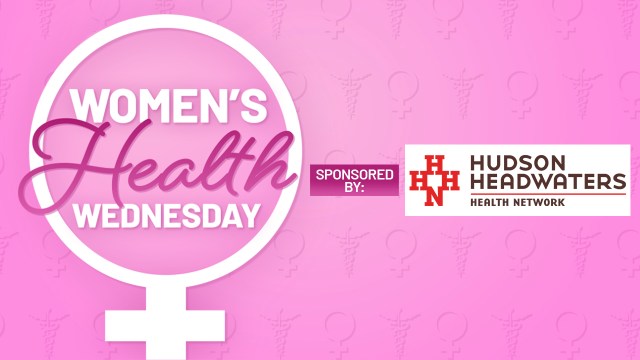While she was in the middle of planning her Disney-inspired pregnancy announcement, Dannette received an unexpected call from the human resources department at her work. She was being laid off at 15 weeks pregnant. It wasn’t exactly how Dannette, a 32-year-old, first-generation college graduate from New York, envisioned her babymoon. The panic quickly struck. She had no idea how she would restart her college loan payments this fall—debts she’d been paying for 11 years until the payments were paused in 2020 during the pandemic—without a job.
It has only been two years since Dannette re-entered the workforce after a disability-related leave, and she knows what it’s like to have her mental health be at the mercy of her finances. In addition to the distress of medical bills, insurance co-payments, and costly medication, Dannette bears a significant student loan debt–roughly $150,000–from college. She’s been paying those loans off for over a decade (the standard payoff time) and doesn’t see an end in sight. “How can you not help but constantly feel defeated by your finances?” she asks.
Dannette is not alone in this debt-related stress. More than 60 percent of all student loan borrowers and 65 percent of women borrowers say their debt has negatively affected their mental health, according to a 2022 CNBC/Momentive Poll survey. Another survey found that one in eight single women owing more than twice their income in student loans experienced suicidal ideation, according to Student Loan Planner. And that number drops to one in six for single women earning less than $50,000.
Dannette would have been able to get $20,000 of her debt canceled under President Joe Biden’s $400 billion student loan forgiveness plan. The plan would have allowed the government to cancel up to $10,000 in federal student debt for Americans making less than $125,000, and up to $20,000 for Pell Grant recipients, a government financial support program for low-income students. But after the Supreme Court ruled Biden’s plan unconstitutional on Friday, Dannette—along with 37 million other borrowers—must shoulder the full weight of her loans.
“Having my loans forgiven is the difference between saving for my child’s education and making a mortgage payment,” Dannette explained before the decision came out.
Long-term student loans can feel debilitating for some borrowers.
For some first-generation Black and Hispanic college students who have worked hard to gain a spot at a college, the decision to sign up for a hefty college loan can feel like a no-brainer at first. “I’m a first-generation Dominican American, I would have signed anything to get into school and make my family proud,” Dannette says.
But she didn’t fully grasp the toll this long-term loan commitment would take when she signed the dotted line on her offer letter 15 years ago. Dannette worries about her loans daily, to the point that she loses sleep. After years of intense academic pressure and stress, Dannette says “it is debilitating,” that “the majority of the money I earn [is] not even mine.”
Women hold almost two-thirds of the more than $1.7 trillion in US student loan debt, according to a report from the American Association of University Women, and the three-year pause on student loans during the pandemic is coming to an end this fall. Initially enacted by former President Donald Trump as a short-term economic relief plan in response to COVID-19, the payments pause has been extended nine times, and subsequently became part of President Joe Biden’s economic policy.
While President Biden hoped to provide 37 million Americans with one-time debt relief under his student loan forgiveness plan, his administration will have to find a new way to help Americans with their crushing debts.
Many first-gen women students must navigate a confusing financial aid system alone.
It is common for first-generation women graduates to feel high levels of anxiety and stress, explains mental health clinician Denisse Rosario Reyes at The Institution of Family Health. So adding in looming student debt can make the feelings compound.
“[Black and Hispanic women] are operating on maximum overdrive. Dealing with high-functioning anxiety, imposter syndrome, and depression because their families are relying on them. There is an immense sense of failure associated with not being able to support and provide for their family,” Rosario Reyes explains.
A lot of first-generation students end up having to navigate loans without tools, networks, or proper financial literacy, explains Rashell Villar, coordinator of College Access at YWCA Brooklyn. They might not know, initially, how to apply for financial aid at their intended college, or to understand the financial responsibility when taking out a student loan.
So, while the number of Hispanic students enrolling in four-year institutions has more than doubled in the last two decades, that doesn’t always mean they make it to graduation, especially after the pandemic. At times, the financial burden could outweigh the educational benefit, leaving students saddled with debt and no degree.
The pay gap for Black and Hispanic women doesn’t help the situation.
Women have been pursuing higher education at higher rates than men for four decades now, and in recent years, that gap has widened even more, the Pew Research Center found. But the gender pay gap in the US hasn’t changed much in twenty years, especially for Black and Hispanic women, who typically earn only 65 to 70 percent as much as their white male counterparts. Still, loans must be paid, and the financial and mental burden can be intense.
Despite getting a good job after graduating from college, Dannette, whose minimum payment for one of her private loans is $1,200, says that her early paychecks mostly went towards paying off loans. “I had very little disposable income,” she explains. “I couldn’t save, move out of my parent’s house, pursue a master’s degree. I couldn’t do anything.”
This isn’t uncommon among borrowers. Around 81 percent of people with student loans say they’ve had to delay key life milestones, such as saving for retirement or buying a home, in order to pay off their student loans, per the CNBC survey. This, in turn, can have a “such a detrimental effect” on a person’s self-esteem and self-worth, explains Rosario Reyes.
The Supreme Court’s ruling on loan forgiveness will likely add to borrowers’ mental health and debt concerns.
And it’s possible that people will experience increased levels of depression, anxiety and suicidal tendencies if they’re unprepared for repayments, according to Rosario Reyes.
Dannette’s “American Dream” isn’t what she thought it would be, but she is trying to be optimistic, and is preparing herself to deal with her loans again. “Now, more than ever, I need to know how to allocate my money for repayments.”
And as millions waited for the court’s ruling on their future debt load, Dannette dropped her pregnancy announcement on Instagram. It was a candid moment of pure, unadulterated joy captured at Disney World.
“The world will always feel like it’s carrying on without you, but with my family, I feel invincible,” Dannette wrote in the caption.
If you’re stressed about your loan repayments, there are resources and ways to plan ahead.
It’s not totally clear yet what student loan repayments could look like for people who haven’t paid a federal loan since March 2020, but there are plenty of ways to get ahead. For starters, you can see if you qualify for income-driven repayment plans, and other student loan forgiveness programs like the Public Service Loan Forgiveness (PSLF) and Teacher Loan Forgiveness Program.
There might also be some great local resources in your town or city for you to lean on. All 50 states, including the District of Columbia, provides at least one program to reduce or forgive student loan debt, and many offer more than that, per GoBankingRates.
For example, the YW Brooklyn LEAD program in New York focuses on breaking the cycle of economic disempowerment for first-generation Black and Hispanic women, and the NYS Get on Your Feet Loan Forgiveness Program offers a maximum of 24 payments equal to the amount of the monthly federal repayment plan payment.
For folks in need of mental health support, Open Path Psychotherapy Collective is a nonprofit with a national network of mental health professionals dedicated to providing in-office and online mental health care—at a steeply reduced rate—to clients in need.









